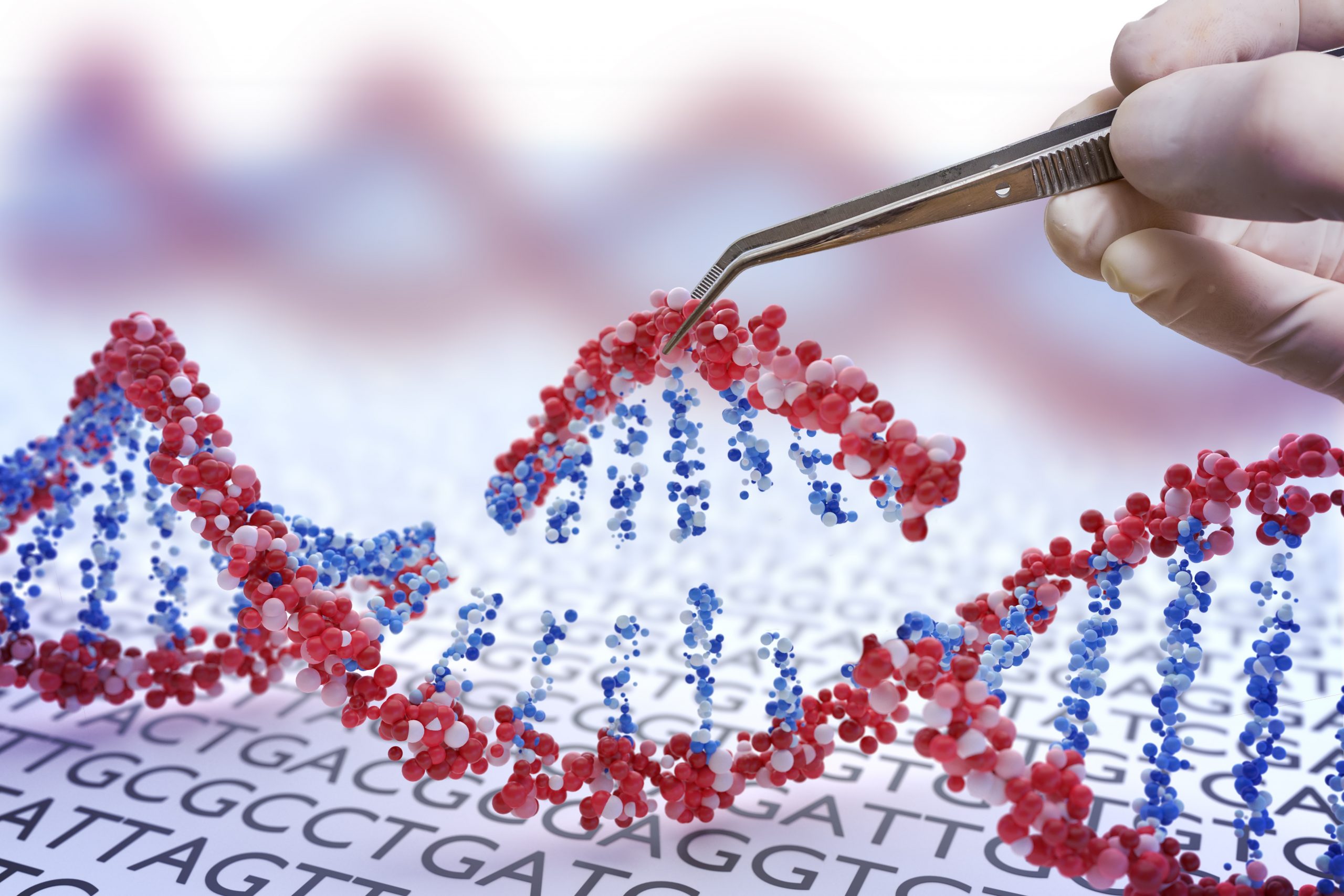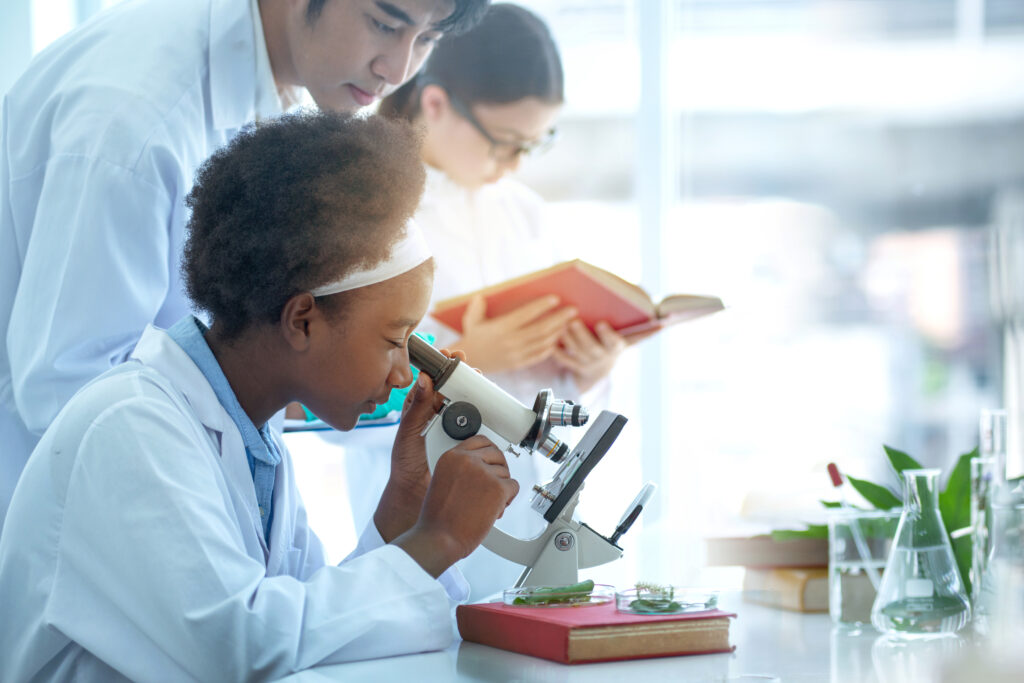The 2020 Nobel Prize for Chemistry has, for the first time, been shared by two female scientists, Emmanuelle Charpentier from France and the American, Jennifer A. Doudna. They led separate teams to discoveries which resulted in the exciting new tool that cuts and pastes DNA and goes by the cryptic name of CRISPR.
DNA, genomes and all that
Francis Crick and James Watson, with the assistance of Rosalind Franklin and Maurice Wilkins discovered the structure of DNA in 1953. While celebrating their work they said that the pattern of the bases that made up the rungs of the double helix ladder might be the code of life. Over the next decades that idea was shown to be true. DNA carries the instructions for making proteins used by organisms. The complete DNA code was read first for viruses and bacteria, then for small multi-celled organisms such as nematode worms. In 2003 the reading of the human genome was completed.
In the 1980s it was noted that some bacteria contained a mysterious repeated sequence of bases. They were given the name CRISPR, the six letters standing for words that describe the sequence and arrangement of the repeats. Within CRISPR were bits of DNA that seemed to resemble the DNA of viruses. It was also noticed that certain genes were always associated with CRISPR but what they did was unknown. In 2005 it was observed that the bacteria that contained CRISPR were resistant to attacks by viruses known as phages. It looked as though the CRISPR genes produced a protein that could snip the DNA of the invading phage in two.
The Winners
Emmanuelle Charpentier was born in 1968. She is a talented piano player and dancer but at school excelled at science. At a young age she told her mother that she would study at the Pasteur Institute in Paris and that is where she did the work for her doctorate. She also adopted Louis Pasteur’s saying, “Chance favours the prepared mind”. Emmanuelle was interested in how pathogens (bacteria that cause diseases) developed resistance to antibiotics. After spells as a researcher in France and the USA, she became a professor and head of a team at the University of Vienna in 2002. She moved to Sweden in 2009 then to Germany in 2014. In 2018 she became Director of the Unit for the Science of Pathogens at the Max Planck Institute in Berlin.
In Vienna, Emmanuelle began looking at how the genes were regulated in streptococcus bacteria that cause mild diseases like tonsilitis but also life-threatening sepsis. She continued the work in Sweden focussing on the RNA molecules (single strands similar to DNA) that controlled the genes. She noticed that one of the RNA molecules had a similar pattern of bases to the genes that had been found near CRISPR sequences. She set her team to look more closely at the CRISPR sequence in her bacteria and discovered a particular molecule called tracrRNA that proved to be important in the reaction cutting the phage DNA. In 2011 Emmanuelle headed to a conference in Puerto Rico having announced her team’s discovery.
Jennifer A Doudna is four years older than Charpentier. She was born in Washington DC where her father was a university teacher of literature and her mother was a history teacher. When Jennifer was seven, they moved to Hawaii. She became fascinated with the plants and animals of the island and her parents encouraged her interest in science. Her father gave her James Watson’s book The Double Helix and this inspired her to study biochemistry. Early in her university course she had doubts about her ability and thought of swapping to French – she excelled at languages – but was persuaded to stick with science. She completed her degree in 1985 and then did research in various parts of the USA before becoming a professor at the University of California, Berkeley, where her husband Jamie already worked. She has a son, Andy.
Jennifer studied the processes in which genes guided the formation of proteins. This is carried out by various forms of RNA. Her research taught her a lot about the jobs done by the various types of RNA in cells. In 2006 she became interested in the CRISPR discoveries. She realised that the genes associated with CRISPR were similar to genes that produced proteins that chop up DNA. With her team she discovered the function of the proteins produced by the CRISPR genes in the particular bacteria she chose to study.
Jennifer also attended the Puerto Rico conference in 2011. She happened to meet Emmanuelle in a café, and they started to talk about their separate work on CRISPR genes and RNA. They carried on talking as they walked around the town and decided to cooperate with each other.
The CRISPR scissors
By 2011 it was known that CRISPR bacteria attacked invading phages using the section of the phage’s genome copied in the bacteria’s CRISPR sequence. This allowed the RNA molecules to find the matching section in the phage DNA. The cutting proteins snipped the DNA at that point.
Charpentier and Doudna now worked together to simplify the system and design the CRISPR sequence so that the protein scissors would break a DNA molecule at the spot that they chose. They soon had success and in 2012 the two women publicised their invention of the CRISPR genetic scissors.
Other scientists quickly realised they could use the CRISPR scissors to snip DNA of plants and animals as well as bacteria and insert new genes. The method was much easier to use than earlier ways of modifying genomes.
Describing their invention as “scissors” makes it appear a simple mechanical process. It is as if a pair of intelligent scissors is being used to snip pieces of string of identical length from thousands of balls of string in a very short time. In fact, it involves RNA molecules matching up the bases in the CRISPR sequence with the target DNA and then protein enzymes breaking the chemical bond in the DNA backbone between specific base pairs. It’s chemistry.
The Feud
Feng Zhang, a scientist at MIT in the US, picked up Charpentier and Doudna’s work and quickly showed that the CRISPR scissors worked on human cells. MIT took out patents on his work. This meant that anyone else wanting to use CRISPR on human cells would have to pay MIT to be able to do the work. Charpentier and Doudna challenged the patents saying that it was merely an extension of their own invention. A court case in 2014 took MIT’s side but the dispute is continuing. Meanwhile Charpentier and Doudna have each formed companies to exploit their discoveries.
The Future and COVID
Scientists are very excited by CRISPR. It is already being used to develop new disease and drought resistant crops. It offers a method of treating genetic diseases and of curing cancers. CRISPR is also part of the fight against the COVID pandemic. It is being used to develop a genetic vaccine that will target the coronavirus genome, snip it and destroy it.
It is only eight years since Charpentier and Doudna developed the CRISPR genetic scissors. Its impact on science has been great which is why they have been awarded the Nobel prize so soon.
Student tasks
- Only five other women have been awarded the Nobel Prize for Chemistry before Charpentier and Doudna. Who are they? Which of them won it alone and which ones shared it with men?
- Emmanuelle Charpentier and Jennifer A. Doudna have become famous. Find out more about their lives and work.
- Charpentier and Doudna worked in the same area of chemistry at different establishments, but it was the discoveries they made together that won them the prize. How important do you think their chance meeting in Puerto Rico was to their success? Would it have been the same if the conference had been on Zoom?
- The Nobel Prize can be awarded to up to three people working in the same field. Do you think Feng Zhang should have had a share for his work on using CRISPR on human cells? Do you think the scientists who did the earlier work on CRISPR should have been rewarded?
- It has become common for scientists and their universities to set up companies to sell products produced from their discoveries. Do you think this is right?
- CRISPR makes it much easier and to carry out precise genetic medication of plants and animals. This could produce new crops and useful bacteria, e.g. to dispose of plastic waste. What modifications to plants and bacteria would you like to see?
- CRISPR could be used to make genetic modifications to human cells, for example to eliminate genetic diseases and to choose characteristics of babies (e.g. hair colour). Do you think modifications like these should be allowed on humans?
- Charpentier and Doudna are still unusual in being female leaders of research teams as well as being female Nobel prize winners. What do you think can be done to help female scientists achieve the same success as men?
Sources
- The 2020 Nobel Prize for Chemistry website
- Emmanuelle Charpentier’s page on the Max Planck Institute website
- Jennifer A. Doudna’s page on The University of California at Berkeley website
- Wikipedia page on Charpentier
- Wikipedia page on Charpentier and Doudna
By Peter Ellis
Discover more lesson ideas based on previous Nobel prize winners
Collins has a wide range of engaging Science resources from KS3 to A-level. Explore the full range here.



